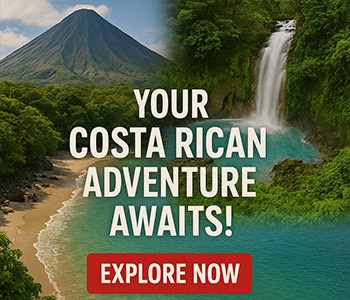Costa Rica’s beaches, already famous worldwide, may soon have an international mark of distinction. The coveted Costa Rican Blue Flag – handed out Tuesday in the annual awards ceremony for beaches, communities and educational centers that uphold certain environmental standards – could soon have the backing of the Denmark-based international Blue Flag program.
Officials with the Bandera Azul program in Costa Rica announced this week that they are in negotiations to integrate the Tico program, started 11 years ago, into the global program.
Costa Rican Blue Flag director Darner Mora said Tuesday at the annual awards ceremony that representatives of the Foundation for Environmental Education (FEE), which oversees the international Blue Flag program, are scheduled to be in Costa Rica April 9-10 to finalize the negotiations and sign a convention putting it into effect.
The new program,Mora explained without getting into details, would apply only to beaches and marinas, and would be a certification rather than an award.
“This means that the beaches that are certified will be on the world map,which will bring greater tourism because, logically, the European Blue Flag has much more prestige than ours,” Mora explained, adding that the individual organizations would have to pay for the certification.
Officials also announced this week that the Costa Rican Blue Flag program would be expanded to include protected areas, a fourth category that joins beaches, communities and educational centers. The new category, Mora explained, will be open to private and public companies that protect and expand forested areas.
During Tuesday’s event, held at the amphitheater of the lushly forested INBioparque in Heredia, north of San José, 251 Blue Flags were awarded to representatives from communities around the country: 58 for beaches, 29 for communities and, symbolically, 10 for schools. This year, 164 schools throughout the country achieved the Blue Flag distinction for their environmental education programs, a category launched during the administration of former President Abel Pacheco (2002-2006).
Eleven first-timers received the Blue Flag designation this year, including the Dulce Vida beach in the Pacific coast province of Puntarenas, Playa Camaronal in the northwestern province of Guanacaste, the town of Aserrí in the mountains south of San José, the northwestern Central Valley coffee town Atenas, Ciudad Quesada in north-central Costa Rica and several communities in the northern province of Heredia.
Playa Flamingo, on the northern Pacific coast, regained its Blue Flag after losing it last year (TT,March 24, 2006). Playa Jacó, on the central Pacific coast, and Playa El Rey, in Manuel Antonio on the central Pacific coast, are among applicants that did not receive a Blue Flag but were recognized by the National Blue Flag Commission for community efforts to meet the requirements.





